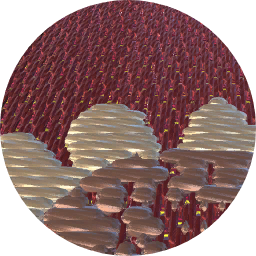Description
Unique
F, 1795-1799, British; calico, Indian, 1780s, painted and mordant-dyed white cotton
A deep round collar finishes the neckline of this stylish open gown made of hand-painted and mordant-dyed Indian cotton. The high-waisted bodice is shaped front and back with box pleats arranged in groups of three, falling loose at the back to form a train. Variations in the depths of the individual pleats indicate that they were the principal method of fitting the gown to the wearer.
The very slight irregularities between the repeats of the pattern show that the cotton has been painted, rather than printed, and executed with great skill. The process involved mordant-dyeing each colour in stages. India was the primary source for painted cottons throughout the 18th century, with a specialised industry producing textiles for export to Europe. By the 1790s, Indian textile painters had long been using European pattern books and swatches of European textiles as templates for their designs.
A woman's gown of cotton and dyed in a patteron of vertical trailing stems, bearing fruits, flowers and leaves. The gown is open at the front with a high waist and long, two-piece sleeves fastening with three thread buttons and buttonholes. The gown is made of two widths of cotton with a partial width at centre back. The gown is flat-pleated into sets of two pleats at each front and 8 sets of pleats at the sides and back, stitched down above the waist. The bodice and sleeves are lined with bleached linen. The bodice front linings overlap at centre front. At the front of the bodice opening on the left-hand side is a belt of the cotton, trimmed with a looped braid of white silk gimp. The belt is lined in white cotton with blue threads in the selvedge denoting English origin. Around the sides and back of the neckline is a single-piece, single-layer collar with square ends at the front and a rounded point at centre back. There is a long loop of linen tape sewn to the centre back waist on the inside of the gown










